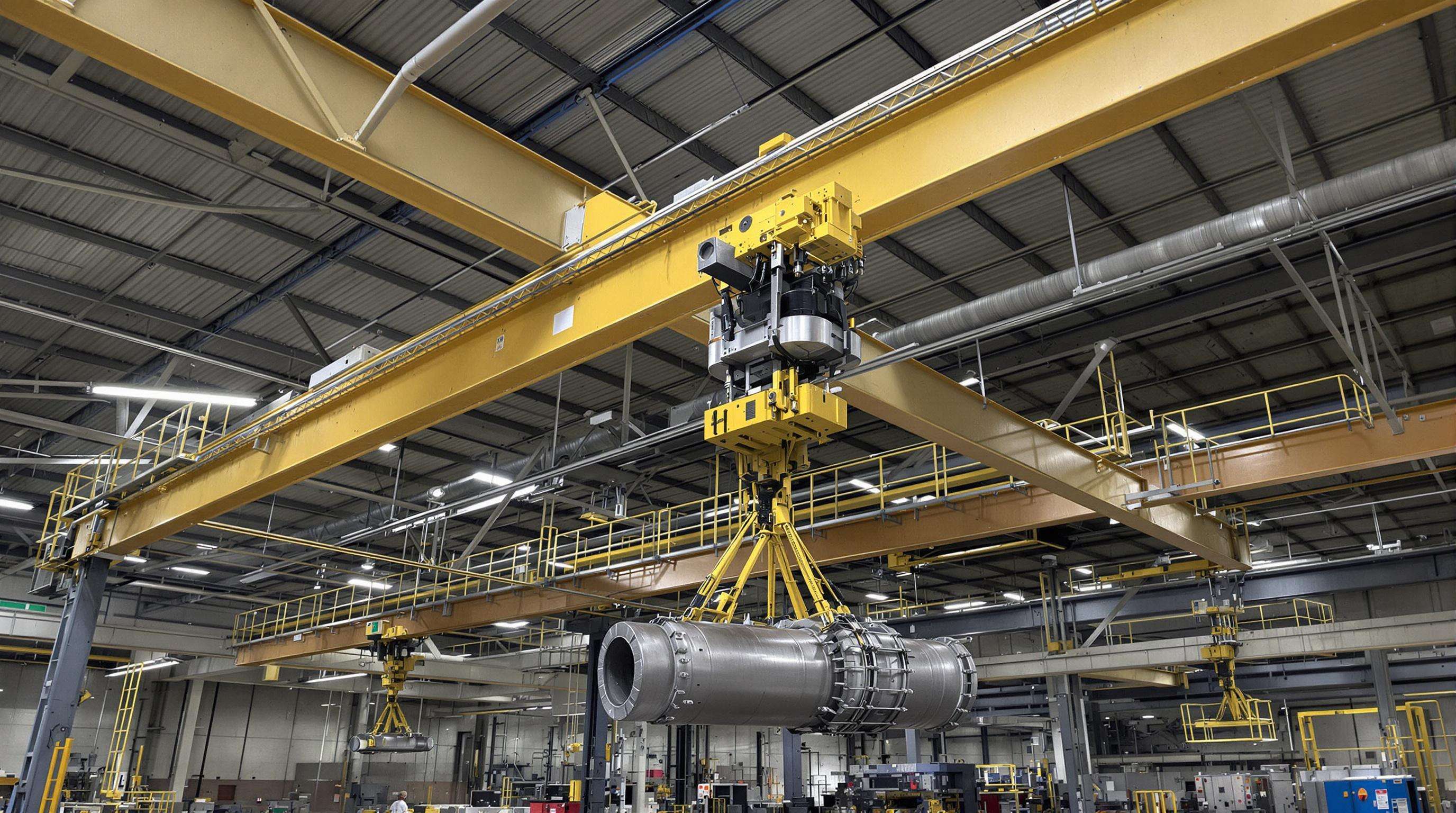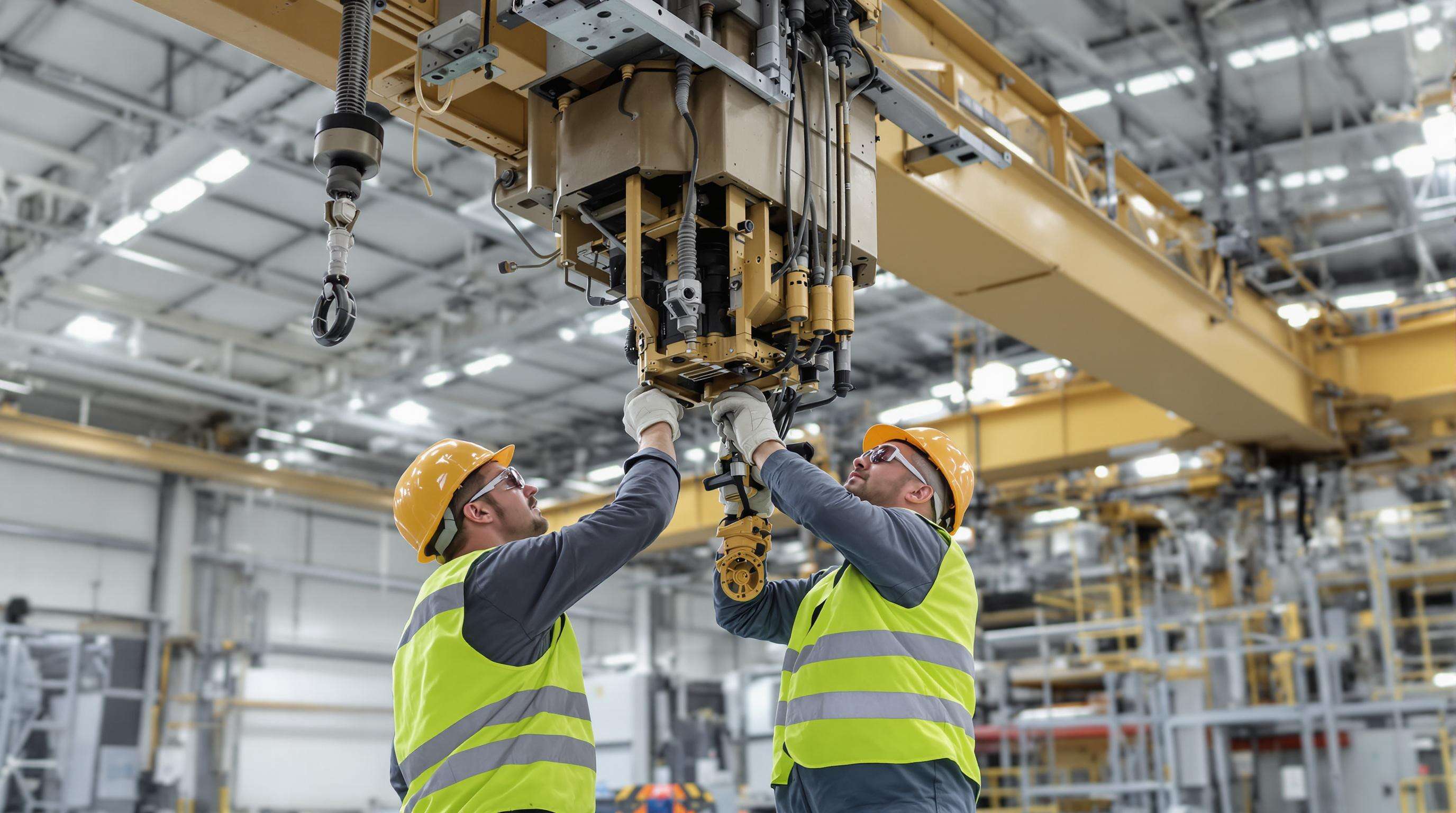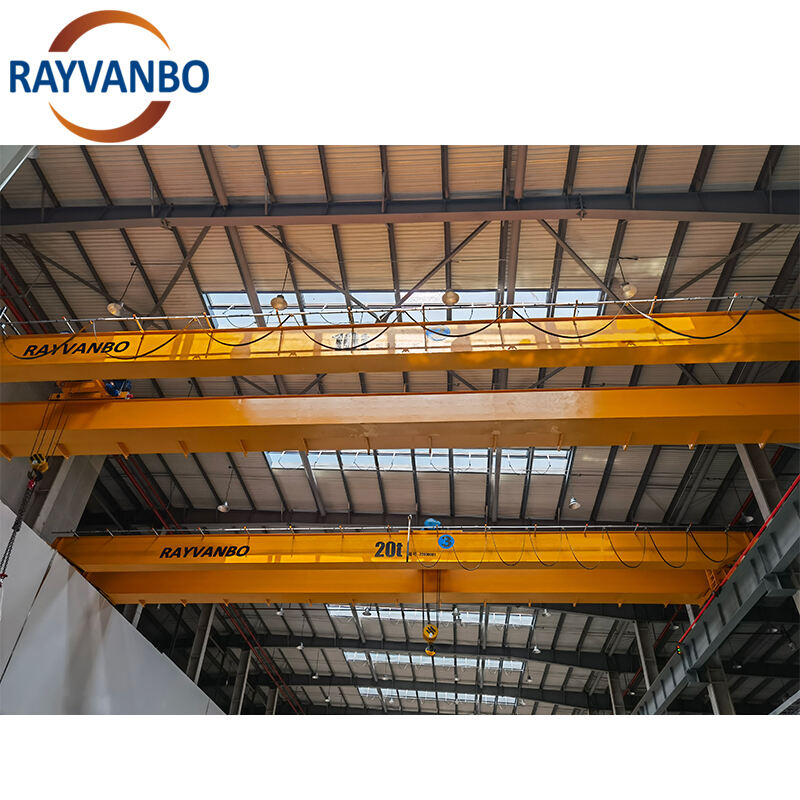Bridge Cranes: Overhead Crane Lifting Backbone

Bridge cranes are the backbone of lifting systems, allowing for accurate movement of heavy loads along the horizontal and vertical axis. They are designed for larger work projects and utilise a bridge girder running along tracks mounted in an overhead system with a hoist trolley over it to make the best use of floor space in a broad range of applications, from automotive through to aerospace production.
Single vs Double Girder Bridge Crane Designs
Single-girder cranes offer cost-effective solutions for light-to-moderate loads (5T-15T), while double-girder configurations increase rigidity for heavy-duty operations (20T-500T+). Double-girder systems accommodate larger hook heights and specialized attachments, making them ideal for steel mills and foundries, though maintenance costs run 15-20% higher.
Industrial Applications in Manufacturing Plants
Bridge cranes handle diverse tasks: positioning 2.5T engine blocks with ±3mm accuracy in automotive plants, maneuvering 50T steel coils in fabrication shops, and transporting sensitive wafers in semiconductor cleanrooms. A tier-1 automotive plant crane typically lifts 12,000 components monthly, reducing manual handling injuries by 38%.
Load Capacity Comparison: 5T to 500T+ Systems
| Capacity Range | Typical Configuration | Industrial Use Case |
|---|---|---|
| 5T-15T | Single girder | Machine shop part handling |
| 20T-75T | Double girder | Turbine assembly |
| 100T-500T+ | Reinforced double girder | Shipyard gantry operations |
Structural steel requirements increase with capacity—500T systems demand runway beams with 650MPa yield strength versus 350MPa for 15T units.
End Truck & Hoist Configuration Essentials
End trucks with forged steel wheels ensure smooth movement, while hoists combine wire rope or chain with dual braking systems. Motorized trolleys with VFD controls maintain ±5mm accuracy at 90% rated load for continuous operations.
Gantry Crane Solutions for Outdoor Operations
Gantry cranes provide adaptable lifting solutions for outdoor environments where fixed overhead cranes are impractical.
Fixed vs Adjustable Span Gantry Structures
Fixed-span gantry cranes offer stability for permanent installations, while adjustable models dominate temporary sites needing spatial flexibility. Modular span adjustability now features in 62% of new outdoor installations.
Shipbuilding & Container Handling Case Studies
Rail-mounted gantry cranes reduce drydock turnaround times by 18%, while rubber-tired systems achieve 320+ lifts/hour in container terminals. A Vietnamese shipyard gained 34% productivity by switching from forklifts to 80T gantries.
Rail-Mounted vs Rubber-Tired Mobility Options
Rail-mounted systems provide ±2mm precision for heavy loads, while rubber-tired models (78% of outdoor projects) excel in terrain adaptability. Hybrid GPS-guided systems reduce repositioning downtime by 41%.
Jib Cranes: Compact Overhead Rotation Masters
Jib cranes optimize localized material handling with rotational capabilities, requiring 80-95% less space than bridge cranes.
Wall-Mounted vs Freestanding Jib Configurations
Wall-mounted jibs cut foundation costs by 40-60%, while freestanding models provide 360° coverage. Both configurations offer 150-200% faster retrieval than forklift workflows.
Workshop Efficiency in Automotive Assembly
Rotating jib cranes reduce part transfer time from 8 minutes to 90 seconds in transmission lines, increasing workstation productivity by 35%.
270° vs 360° Rotation Capability Analysis
270° jibs suit space-constrained areas, while 360° models need 50% more clearance. OSHA mandates 20% reduced capacity at maximum rotation angles.
Monorail Overhead Systems for Linear Material Flow
Monorail systems streamline transport along fixed paths, handling 500 lbs to 20 tons for repetitive workflows.
I-Beam vs Enclosed Track Monorail Designs
I-beam monorails handle heavy loads up to 20 tons, while enclosed tracks reduce maintenance by 40% in corrosive environments.
Paint Shop & Assembly Line Implementation
Monorails enable 30% faster paint drying cycles and reduce assembly line idle time by 22% through just-in-time component delivery.
Workstation Cranes: Ergonomic Overhead Solutions
These systems transform material handling in precision environments, reducing worker strain for lifts under 10 tons.
Modular Aluminum vs Steel Bridge Systems
Aluminum systems suit lightweight applications, while steel handles heavier payloads. New coated alloys offer comparable corrosion resistance.
Manual vs Motorized Operation in CNC Shops
Manual hoists reduce costs in small-batch operations, while motorized systems improve precision in high-volume manufacturing.
Custom Overhead Crane Engineering Principles
Explosion-Proof & Corrosion-Resistant Designs
Specialized designs prevent ignition risks and material degradation, with 89% of facility managers prioritizing these protections.
ASME B30 & CMAA Classified Duty Cycles
CMAA Specification 70 defines service classifications, with proper selection reducing repair costs by 34%.
Safety Protocols Across Overhead Crane Types

Standardized procedures reduce equipment failure rates by up to 73%.
Load Testing & Inspection Frequency Standards
| Inspection Type | Frequency | Key Metrics Assessed |
|---|---|---|
| Preventive Maintenance | Quarterly | Gear wear, electrical insulation |
| Structural Integrity | Biannually | Girder deflection, weld points |
| Full System Validation | Annually | Dynamic braking, overload response |
Anti-Collision Systems for Multi-Crane Facilities
Modern systems reduce near-miss incidents by 62% through RFID zoning and LiDAR mapping, enforcing ISO 12485:2022 safety distances.
Frequently Asked Questions
What is the difference between single-girder and double-girder bridge cranes?
Single-girder bridge cranes are more cost-effective and suitable for light-to-moderate loads ranging from 5T to 15T. Double-girder cranes, on the other hand, are designed for heavier operations, handling 20T to over 500T loads, and accommodate larger hook heights.
How do gantry cranes differ in outdoor applications?
Gantry cranes are versatile for outdoor applications where overhead cranes might be impractical. They come in fixed and adjustable span types, with rail-mounted and rubber-tired mobility options to suit different terrain and project needs.
What are the safety standards for operating overhead cranes?
Overhead crane safety standards include regular load testing and inspection frequencies, encompassing preventive maintenance, structural integrity, and system validation. Anti-collision systems with RFID zoning are also implemented to enhance safety in multi-crane facilities.
Why choose jib cranes for certain operations?
Jib cranes are efficient for compact areas, offering rotational capabilities which require significantly less space compared to bridge cranes. They are ideal for localized material handling and can reduce part transfer time significantly in some applications.
Table of Contents
- Bridge Cranes: Overhead Crane Lifting Backbone
- Gantry Crane Solutions for Outdoor Operations
- Jib Cranes: Compact Overhead Rotation Masters
- Monorail Overhead Systems for Linear Material Flow
- Workstation Cranes: Ergonomic Overhead Solutions
- Custom Overhead Crane Engineering Principles
- Safety Protocols Across Overhead Crane Types
- Frequently Asked Questions

